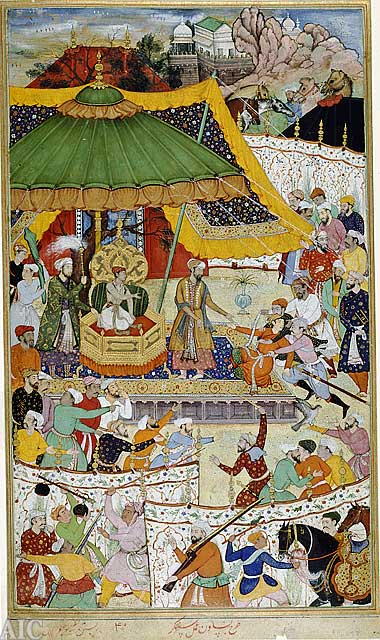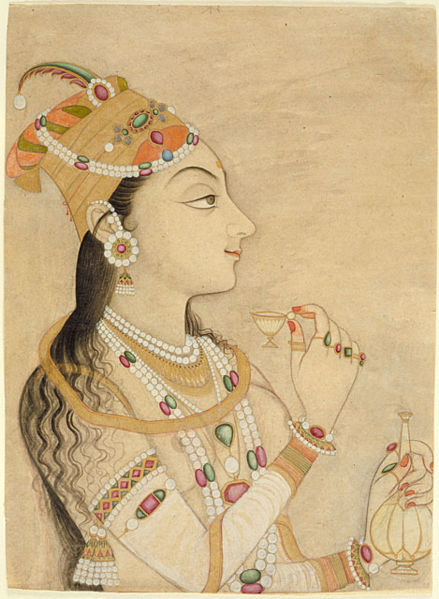|
Muslin Cloth
Muslin () is a cotton fabric of plain weave. It is made in a wide range of weights from delicate sheers to coarse sheeting. It gets its name from the city of Mosul, Iraq, where it was first manufactured. Muslin of uncommonly delicate handspun yarn was handwoven in the Bengal region of South Asia and imported into Europe for much of the 17th and early 18th centuries. In 2013, the traditional art of weaving ''Jamdani'' muslin in Bangladesh was included in the list of Masterpieces of the Oral and Intangible Heritage of Humanity by UNESCO. History In 1298 CE, Marco Polo described the cloth in his book ''The Travels''. He said it was made in Mosul, Iraq. The 16th-century English traveller Ralph Fitch lauded the muslin he saw in Sonargaon. During the 17th and 18th centuries, Mughal Bengal emerged as the foremost muslin exporter in the world, with Mughal Dhaka as capital of the worldwide muslin trade. It became highly popular in 18th-century France and eventually spread acros ... [...More Info...] [...Related Items...] OR: [Wikipedia] [Google] [Baidu] |
Bengal Subah
The Bengal Subah ( bn, সুবাহ বাংলা; fa, ), also referred to as Mughal Bengal ( bn, মোগল বাংলা), was the largest subdivision of the Mughal Empire (and later an independent state under the Nawabs of Bengal) encompassing much of the Bengal region, which includes modern Bangladesh and the Indian state of West Bengal, Indian state of Bihar, Jharkhand, Odissa between the 16th and 18th centuries. The state was established following the dissolution of the Bengal Sultanate, a major trading nation in the world, when the region was absorbed into one of the gunpowder empires. Bengal was the wealthiest region in the Indian subcontinent, due to their thriving merchants, Seth's, Bankers and traders and its proto-industrial economy showed signs of driving an Industrial revolution. Bengal Subah has been variously described the "Paradise of Nations" and the "Golden Age of Bengal", due to its inhabitants' living standards and real wages, which were a ... [...More Info...] [...Related Items...] OR: [Wikipedia] [Google] [Baidu] |
Ain-i-Akbari
The ''Ain-i-Akbari'' ( fa, ) or the "Administration of Akbar", is a 16th-century detailed document recording the administration of the Mughal Empire under Emperor Akbar, written by his court historian, Abu'l Fazl in the Persian language. It forms Volume III and the final part of the much larger document, the ''Akbarnama'' (''Account of Akbar''), also by Abu'l-Fazl, and is itself in three volumes. Contents The ''Ain-i-Akbari'' is the third volume of the ''Akbarnama'' containing information on Akbar's reign in the form of administrative reports, similar to a gazetteer. In Blochmann's explanation, "it contains the 'āīn' (i.e. mode of governing) of Emperor Akbar, and is in fact the administrative report and statistical return of his government as it was about 1590."Blochmann, H. (tr.) (1927, reprint 1993). ''The Ain-I Akbari by Abu'l-Fazl Allami'', Vol. I, Calcutta: The Asiatic Society, preface (first edition) The ''Ain-i-Akbari'' is divided into five books. The first book calle ... [...More Info...] [...Related Items...] OR: [Wikipedia] [Google] [Baidu] |
Abrawan
Abrawan () was a kind of muslin cloth produced in Indian subcontinent. The Abrawan was characterized by the nature of the fabric that was like flowing water. Name Abrawan means ''running water'' that symbolizes its fineness. ''Running water'' and ''Woven air'' were poetic names of contemporaneous muslins. Weave Abrawan was a plain weave fabric made primarily of cotton, with silk variations available. It was a transparent, lightweight structure, one of Dacca's finest muslins. Weavers used to weave qualities similar to Abrawan during the monsoon season to protect the yarn from breaking due to dry weather. Quotes Abrawan was recorded for its fine texture. There are two stories related to Abrawan that demonstrate the grandeur of the fabric. The first one is related to an argument between the sixth Mughal emperor Aurangzeb and his daughter where the king is arguing modesty. Another tale is about the Nawab of Bengal Alivardi Khan expelling of a weaver who, ignored, let a cow sw ... [...More Info...] [...Related Items...] OR: [Wikipedia] [Google] [Baidu] |
Warp And Weft
Warp and weft are the two basic components used in weaving to turn thread or yarn into fabric. The lengthwise or longitudinal warp yarns are held stationary in tension on a frame or loom while the transverse weft (sometimes woof) is drawn through and inserted over and under the warp. A single thread of the weft crossing the warp is called a ''pick''. Terms vary (for instance, in North America, the weft is sometimes referred to as the ''fill'' or the ''filling yarn'').Barber (1991), p. 79 Each individual warp thread in a fabric is called a ''warp end'' or ''end''.Burnham (1980), pp. 170, 179 Inventions during the 18th century spurred the Industrial Revolution, with the "picking stick" and the "flying shuttle" ( John Kay, 1733) speeding up the production of cloth. The power loom patented by Edmund Cartwright in 1785 allowed sixty picks per minute. Etymology The word ''weft'' derives from the Old English word ''wefan'', to weave. ''Warp'' means "that which is thrown away" (O ... [...More Info...] [...Related Items...] OR: [Wikipedia] [Google] [Baidu] |
Textile
Textile is an umbrella term that includes various fiber-based materials, including fibers, yarns, filaments, threads, different fabric types, etc. At first, the word "textiles" only referred to woven fabrics. However, weaving is not the only manufacturing method, and many other methods were later developed to form textile structures based on their intended use. Knitting and non-woven are other popular types of fabric manufacturing. In the contemporary world, textiles satisfy the material needs for versatile applications, from simple daily clothing to bulletproof jackets, spacesuits, and doctor's gowns. Textiles are divided into two groups: Domestic purposes onsumer textilesand technical textiles. In consumer textiles, aesthetics and comfort are the most important factors, but in technical textiles, functional properties are the priority. Geotextiles, industrial textiles, medical textiles, and many other areas are examples of technical textiles, whereas clothing and ... [...More Info...] [...Related Items...] OR: [Wikipedia] [Google] [Baidu] |
Muslin Transparency 2015 Kolkata
Muslin () is a cotton fabric of plain weave. It is made in a wide range of weights from delicate sheers to coarse sheeting. It gets its name from the city of Mosul, Iraq, where it was first manufactured. Muslin of uncommonly delicate handspun yarn was handwoven in the Bengal region of South Asia and imported into Europe for much of the 17th and early 18th centuries. In 2013, the traditional art of weaving ''Jamdani'' muslin in Bangladesh was included in the list of Masterpieces of the Oral and Intangible Heritage of Humanity by UNESCO. History In 1298 CE, Marco Polo described the cloth in his book ''The Travels''. He said it was made in Mosul, Iraq. The 16th-century English traveller Ralph Fitch lauded the muslin he saw in Sonargaon. During the 17th and 18th centuries, Mughal Empire, Mughal Bengal Subah, Bengal emerged as the foremost muslin exporter in the world, with Mughal Dhaka as capital of the worldwide muslin trade. It became highly popular in 18th-century France a ... [...More Info...] [...Related Items...] OR: [Wikipedia] [Google] [Baidu] |
Catfish
Catfish (or catfishes; order Siluriformes or Nematognathi) are a diverse group of ray-finned fish. Named for their prominent barbels, which resemble a cat's whiskers, catfish range in size and behavior from the three largest species alive, the Mekong giant catfish from Southeast Asia, the wels catfish of Eurasia, and the piraíba of South America, to detritivores (species that eat dead material on the bottom), and even to a tiny parasitic species commonly called the candiru, ''Vandellia cirrhosa''. Neither the armour-plated types nor the naked types have scales. Despite their name, not all catfish have prominent barbels or "whiskers". Members of the Siluriformes order are defined by features of the skull and swimbladder. Catfish are of considerable commercial importance; many of the larger species are farmed or fished for food. Many of the smaller species, particularly the genus ''Corydoras'', are important in the aquarium hobby. Many catfish are nocturnal, [...More Info...] [...Related Items...] OR: [Wikipedia] [Google] [Baidu] |
Combing
Combing is a method for preparing carded fibre for spinning. Combing is divided into linear and circular combing. The Noble comb is an example of circular combing. The French comb is an example of linear combing. The process of combing is accompanied by ''gilling'', a process of evening out carded or combed top making it suitable for spinning. Combing separates out short fibres by means of a rotating ring or rectilinear row of steel pins. The fibres in the 'top' it produces have been straightened and lie parallel to each other. When combing wool, the discarded short fibres are called noils, and are ground up into shoddy. In general, there are two main systems of preparing fibre for yarn: the worsted system and the woollen system. The worsted system is defined by the removal of short fibres by combing and top preparation by gilling. In the woollen system, short fibres are retained, and it may or may not involve combing. Description The circular combs used have long metal tee ... [...More Info...] [...Related Items...] OR: [Wikipedia] [Google] [Baidu] |
Weaving
Weaving is a method of textile production in which two distinct sets of yarns or threads are interlaced at right angles to form a fabric or cloth. Other methods are knitting, crocheting, felting, and braiding or plaiting. The longitudinal threads are called the warp and the lateral threads are the weft, woof, or filling. (''Weft'' is an Old English word meaning "that which is woven"; compare ''leave'' and ''left''.) The method in which these threads are interwoven affects the characteristics of the cloth. Cloth is usually woven on a loom, a device that holds the warp threads in place while filling threads are woven through them. A fabric band that meets this definition of cloth (warp threads with a weft thread winding between) can also be made using other methods, including tablet weaving, back strap loom, or other techniques that can be done without looms. The way the warp and filling threads interlace with each other is called the weave. The majority of woven products a ... [...More Info...] [...Related Items...] OR: [Wikipedia] [Google] [Baidu] |
Artisan
An artisan (from french: artisan, it, artigiano) is a skilled craft worker who makes or creates material objects partly or entirely by hand. These objects may be functional or strictly decorative, for example furniture, decorative art, sculpture, clothing, food items, household items and tools and mechanisms such as the handmade clockwork movement of a watchmaker. Artisans practice a craft and may through experience and aptitude reach the expressive levels of an artist. History The adjective "artisanal" is often used in describing hand-processing in contrast to an industrial process, such as in the phrase ''artisanal mining''. Thus, "artisanal" is sometimes used in marketing and advertising as a buzz word to describe or imply some relation with the crafting of handmade food products, such as bread, beverages or cheese. Many of these have traditionally been handmade, rural or pastoral goods but are also now commonly made on a larger scale with automated mechani ... [...More Info...] [...Related Items...] OR: [Wikipedia] [Google] [Baidu] |









